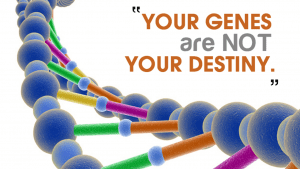What Are They??
Vertebral Subluxation Complex (VSC) – or ‘subluxation’ for short is what Chiropractors call the areas of interference to your nervous system that we locate within your body (most often, but not exclusively in your spine); these areas of interference alter or reduce the communication quality between the cells of your body and your brain, from where the ‘intelligent’ organisation and coordination of all of your function occurs.
A 'medical subluxation' is defined differently to a 'chiropractic subluxation' - confusing, but true!
The medical definition is simply an anatomical one: "a partial separation of joint surfaces, less than a complete dislocation"
Subluxation are the ‘entities’ chiropractors assess and examine for, to determine if an adjustment is clinically necessary.
It is essential that the brain-body connection is operating as cleanly and effectively as possible to enable optimum flow of nerve information, and from this, optimum coordination of all of the functions of life!
Subluxation dysfunction can occur within ANY joint of the body, although primarily chiropractors address them when they occur in the spinal joints. These joints are more concentrated with the sensory nerves that contribute to ‘errors’ in the afferent (inward) flow of nerve feedback to the brain.
This diagram gives a sense of the complexity of the the neurological pathways and structures affected:
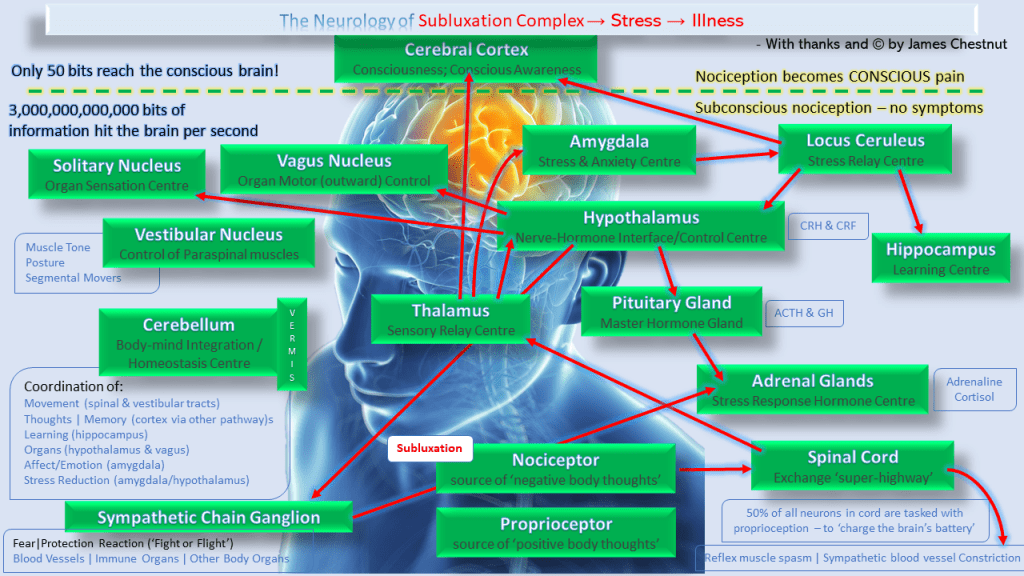
Vertebral Subluxation Complex (VSC) is the more precise terminology for this dysfunction when it occurs in the spine;
the term ‘complex’ tells you that there are a series of different effects and changes to your body
that chiropractors can use to identify where these malfunctioning joint structures may be.
The different parts of this ‘complex’ inter-relate and affect one another.
This syndrome or model of physiologic and/or pathologic changes occur when joints are not moving correctly – it involves change in movement or range, change to neurologic function, change to tissues including muscle and ligaments, and inflammation at the local level.
A simple way to grasp the impact of this dysfunction is where these changes of information-flow result in DYSREGULATION. This inappropriate regulation of body function arises from changes to neurological ‘perception’ – where inaccurate integration of sensory and moter functions often lead to misuse of your body’s internal resources and energy.
The results however, are far from simple.
The outline below of ‘the 4 D’s’ – 4 components or aspects of dysfunction which result from inappropriate joint movement, show some of the complexity of the science underpinning chiropractic. You can see from this brief overview that joint and neurological dysfunction is NOT a good state for your body to be experiencing! This is WHY we adjust your spine if we find evidence of subluxation!
Expand each option to learn more:
As defined by Dorland’s Medical Dictionary –
(dis’’po-ne’sis) [dys– + Gr. Ponésis toil, exertion]
A reversible physiopathologic state consisting of unnoticed, misdirected neurophysiologic reactions to various agents (environmental events, bodily sensations, emotions, and thoughts) and the repercussions of these reactions throughout organism.
These errors in energy expenditure, which are capable of producing functional disorders, consist mainly of covert errors in action-potential output from the motor and premotor areas of the cortex and the consequences of that output. – Dorland’s Medical Dictionary
If we convert the above definition into more common language, dysponesis is disordered or diseased function resulting from unconscious, innappropriate nerve messages and reflexes that occur because of physical, mental-emotional and chemical stimuli which the body is unable to respond to appropriately.
Dysponesis leads to problems in energy use or prioritisation, and can lead to disordered function at the electrical level of nerve cells, particular those parts of the brain that send the ‘control’ messages out to the body.
There are no symptoms of this in most cases!
Dyskinesia is abnormal or inappropriate movement.
It can be in voluntary and involuntary muscle activity.
It can lead to change in balance or coordination – falls, rolled ankles, hitting yourself as you pass through a door!
It can lead to inappropriate muscle ‘firing’ patterns which mean you lose efficiency or have to compensate with other muscles or muscle groups.
It can mean changes in posture.
Commonly chiropractors when examining their clients find evidence of poor ‘lock-in’ where muscles cannot be effectively voluntarily contracted, against resistance, on demand! This is common, but it is not NORMAL!
Afferentation is a technical name for sensation – it is the information coming back to the brain from the body at a profound rate of 3 Trillion bits per second. Elsewhere we have discussed the two primary forms of afferent nerve feedback – proprioception and nocieption, both of which have further sub-categories.
Dysafferentation is therefore disordered, incomplete or inaccurate neurological feedback and this occurs when joint components either get ‘stuck’ or lose their full, correct range of motion.
The impact of dysafferentation on the brain is change to its ‘neural image,’ leading to a reduced or inaccurate perception of both your internal and your external environment. This can further feed into dysponesis (above).
The impact of inappropriate levels or ratios of nociception (the body’s ‘stress feedback’ that can become physical pain, but is most often processed in unconscious areas of the brain) can result in ‘noxious noise’ where the brain becomes over-vigilant or over-responsive to certain information/input, or it’s overall coordination is compromised because it is reacting and using resources to ‘put out the fires’ rather than focus on the most important functions to keep you alive.
The autonomic nervous system is the unconscious network that controls and coordinates all of the organ function to keep you alive – all the functions you don’t think about – from heart rate, blood pressure, respiration rate, digestion, hormone release, metabolism and so much more…
Dysautonomia then, is the disordered function of this system.
The system comprised two parts – the ‘sympathetic’ part that mostly leads to ‘increase’ – this is the one that fires off the ‘fear and protection’ reaction (historically called the ‘fight or flight’ reaction) and the ‘parasympathetic’ part that mostly has a ‘moderate and slow down’ function – some call this the ‘rest, relaxation, growth and healing’ part.
These two parts normally work together in a fine balance, however subluxation (and other forces!) can lead to what is called ‘sympathetic dominance’ – an imbalance of function which leads to ever-increasing systemic dysfunction…the ‘stress response’ which is described in more detail here and here.
There are both biomechanical and broader functional components of subluxation.
Looking just at the biomechanical aspects, two general types of subluxation can be described:
Static Subluxation
where the joint is effectively ‘stuck’ and not moving freely in the way it is supposed to (in its own range of motion and/or relative to other nearby joints)
Dynamic Subluxation
where movement is still occurring but NOT in the full range or in the correct manner that is normal.
These mechanical disturbances are often very subtle and chiropractors train extensively to develop the skills to identify them. These mechanical changes may only be fractions of a millimetre, and often there are no overt symptoms to tell you they are present. These effects can happen in part from a structural change to joint movement or position.
No joint of the body is designed to be compromised.
Think about it. If your knee joint was not moving in its full range, would you not want to work to improve that range? While the knee joint is NOT working at its best will it degenerate, cause pain, muscle spasm, inflammation and more? The same applies for the many joints of the spine.
Research has shown that the biochemical changes that mark the beginning of degeneration begin to occur within 24 hours of a joint’s motion being compromised!
The specific dysfunction that occurs within the joint locally include: supporting ligaments and other joint components beginning to undergo a ‘breakdown’ process which can be because of muscles going into spasm and holding the joint in the wrong position.
Inflammation quickly develops sometimes increasing pain in or near to the area, changes then occur to the chemical structure of the ‘lubrication fluid’ inside the joint which can lead to tiny little scars forming; given enough time, overt degeneration like arthritis can start to develop in and around the bony parts of the joint and the ‘suspension’ disc between the bones.
Contracture of the soft tissues around a joint due to reduced motion can lead to plastic deformation and or reduced range of motion.
This dysfunction can become 'patterned'
The body adapts and effectively ‘learns’ to subluxate specific joints in your body as a protective reflex when under stressful stimuli.
Subluxation can be caused by our inability to handle or appropriately adapt to life’s three major types of stressors: physical, mental-emotional and biochemical.
Left uncorrected, this dysfunction can degenerate and become worse. They may contribute to breakdown, malfunction and dis-ease.
Subluxation is a HEALTH problem not a BACK problem!
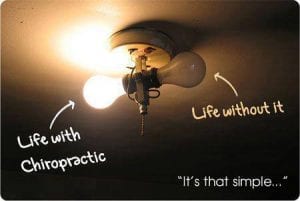
Subluxation: An ‘energetic’ or ‘esoteric’ definition
If you are more engaged by a more esoteric or ‘energetic’ explanation of this world, you will likely appreciate the following article. The chiropractic subluxation can be described in many ways; this one has more esoteric overtones: While chiropractic subluxation can be described in very mechanical terms, the meaning of the concept or model of
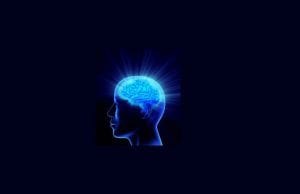
Another ‘take’ on Subluxation Dysregulation
Subluxation dysregulation is a state of that drives ‘mis-perception’ of your body and environment by your brain. Your cells and brain communicate via two main types of message – healthy ‘body awareness’ (good) signals or less healthy ‘stress’ (bad) signals. The body awareness signals are better thought of as being like a ‘nutrient’ your brain
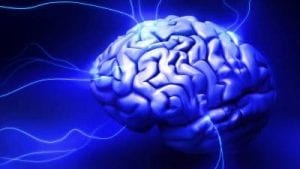
Subluxation: A Technical Description
This article provides a more technical description of the neurophysiological impact of subluxation – for those that want it! Subluxation is the ‘entity’ (state of dysfunction) which Chiropractors identify and correct The various neurological effects as proposed include subcortical (unconscious) reflex responses including Somato-Visceral, Visceral-Somatic, Somato-Somatic and Viscero-Visceral reflexes where aberrant motion leads to aberrant

Subluxation Pandemic in Industrialized society
Why is subluxation pandemic in industrialised (‘western’) societies? “Sitting is to the spine, as sugar is to the teeth” – Dr James Chestnut Many people never see a chiropractor, and often those that do come only as after trying everything else, and usually because they want help with a pain or a symptom. What most
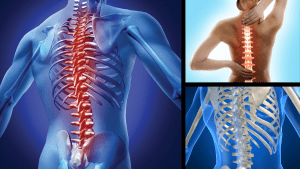
Vertebral Subluxation Complex as “segmental movement deficiency syndrome”
It cannot be denied that movement deficiency is a problematic state that can lead to many functional consequences if allowed to continue. This is as true for small degrees of movement deficiency as for large, and as true for small joints of the body as for the large weight-bearing joints like knees. Vertebral Subluxation Complex
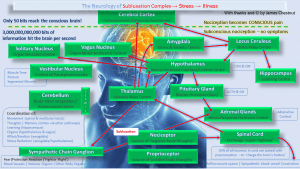
Why Subluxations can remain Undetected and Silently Cause Harm
What is Pain? Chiropractic Subluxations only RARELY result in pain or other symptoms. Pain is actually an emotional experience. It results from higher brain-areas responding to ‘stress’ signals with memory and other factors which determine how bad the pain is and how debilitating it might be. The same injury can have one person doubled over





